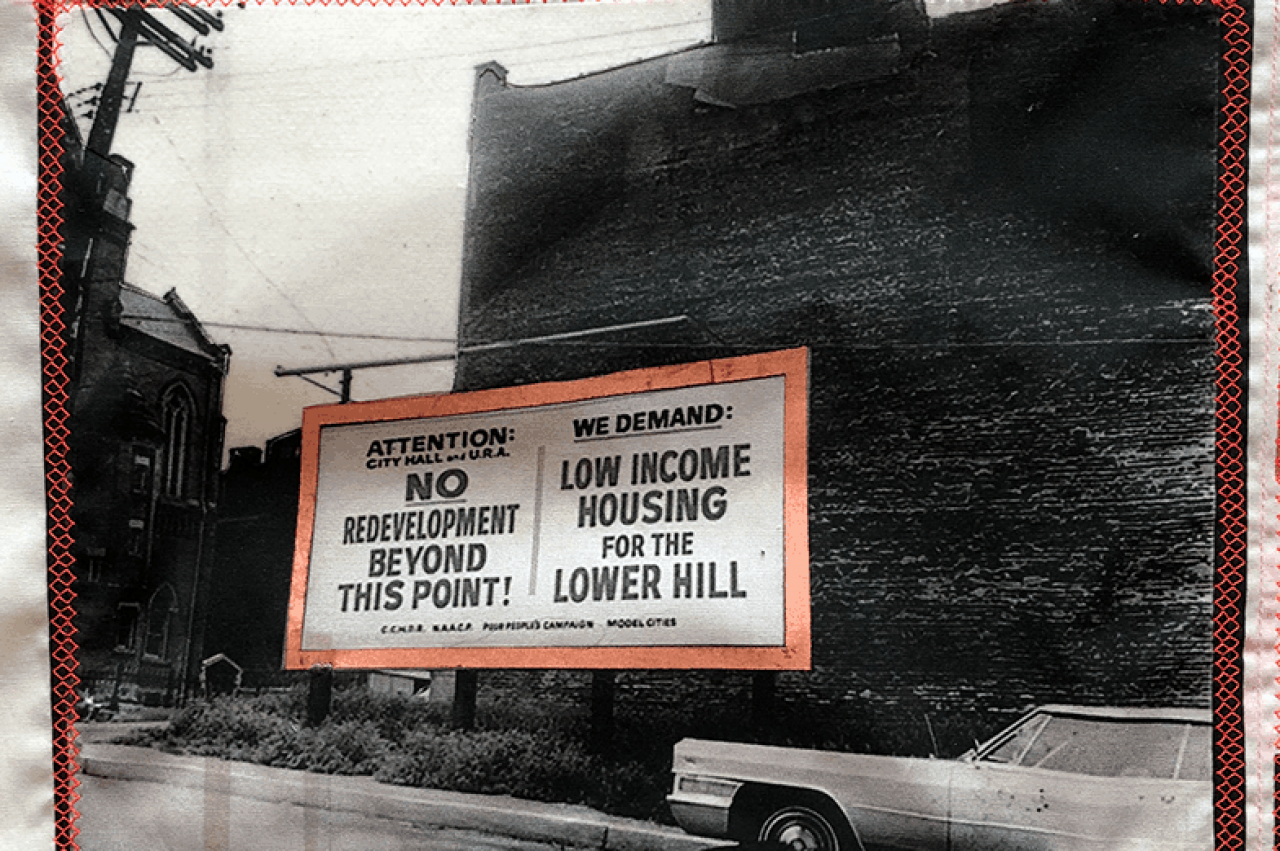February 10, 2021
Architecture professor to be featured in upcoming MoMA exhibition

UNIVERSTY PARK, Pa. — Felecia Davis, an associate professor of architecture in the Stuckeman School at Penn State who has gained widespread recognition for her work designing lightweight textiles that change properties in response to their environment, is one of 10 architects, designers and artists who will be featured in an upcoming Museum of Modern Art (MoMA) exhibition that examines contemporary architecture in the context of how systemic racism has fostered violent histories of discrimination and injustice in the United States.
“Reconstructions: Architecture and Blackness in America,” which has been described by organizers as “an investigation into the intersections of architecture, blackness and anti-black racism in the American context,” will run Feb. 20 through the end of May. Its original opening date in October was postponed due to the coronavirus.
The exhibition features a series of 10 newly commissioned works that, according to MoMA will “explore how people have mobilized black cultural spaces, forms and practices as sites of imagination, liberation, resistance and refusal.” It is the fourth iteration of the museum’s “Issues in Contemporary Architecture” series, which was launched in 2010.
Davis, who is the Carey Memorial Early Career Professor in the Arts and director of the Computational Textiles Lab (SOFTLAB) in the Stuckeman Center for Design Computing, is developing textile systems for use in architecture that can sense and respond to the world around them through digital electronic programing and sensors. These systems can also be programmed by using the natural transformative quality of the material itself in connection with environmental cues, such as humidity, temperature and light.
In order to demonstrate her research, Davis created a quilt to connect with residents of the Hill District in Pittsburgh. Each panel on the quilt reflects a different image of importance in the history of the Hill District, which is a grouping of historically African American neighborhoods in the city. When the copper fabric on the quilt is touched, sensors activate the narration of the panel story which plays through a small speaker that is incorporated at the bottom of the quilt. District residents will be able to add their own panels and stories to the quilt over time. The quilt is part of a duo transmitting/receiving textile installation that will be shown in the MoMA gallery.
The computational textiles in the quilt and receiving-textile installation were fabricated with the help of a team of Penn State students including recent M.S. in Architecture graduate and SOFTLAB researcher Berfin Evrim, architecture graduate students Elliot Brau, Ciera Jones, Niousha Keyvaninejad and Farzaneh Oghazian; undergraduate architecture student Thomas Dimick; Taylor Hufnagel, who is majoring in chemistry and theater; and recent M.Arch. graduate Mona Mirzaie. Lee Washesky, architecture lecturer, and Stuckeman School staff members Allan Sutley, Jamie Heilman and Steve White Sr. also assisted in the fabrication.
Undergraduate architecture students Tommy Dimick and Marzena Nowobilski, M.Arch. student Kristine Luther and Evrim also helped Davis with the physical and digital models for the MoMA exhibition.
The 10 artists, designers and architects featured by MoMA – Emanuel Admassu, Germane Barnes, Sekou Cooke, J. Yolande Daniels, Mario Gooden, Walter Hood, Olalekan Jeyifous, V. Mitch McEwen, Amanda Williams, along with Davis – have been giving virtual lectures together at universities and institutions around the nation on issues surrounding racial injustice and Black history since the fall. “The Black Reconstruction Collective,” as the group is known, will be hosted by the Department of Architecture in partnership with Stuckeman School and WPSU at 6 p.m. on March 24 as part of the school’s Spring Virtual Lecture Series.
More information about the show can be found on the MoMA website.
For more Stuckeman School news, follow us on Twitter @StuckemanNews.
